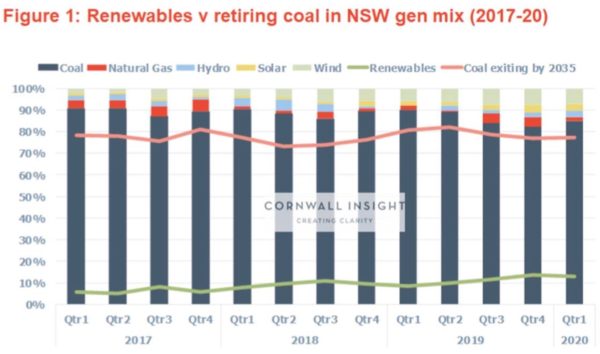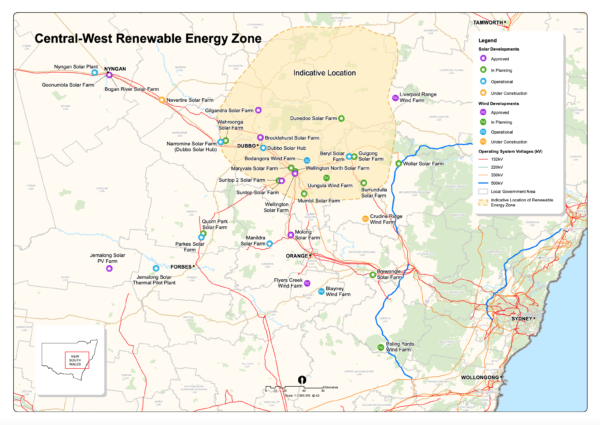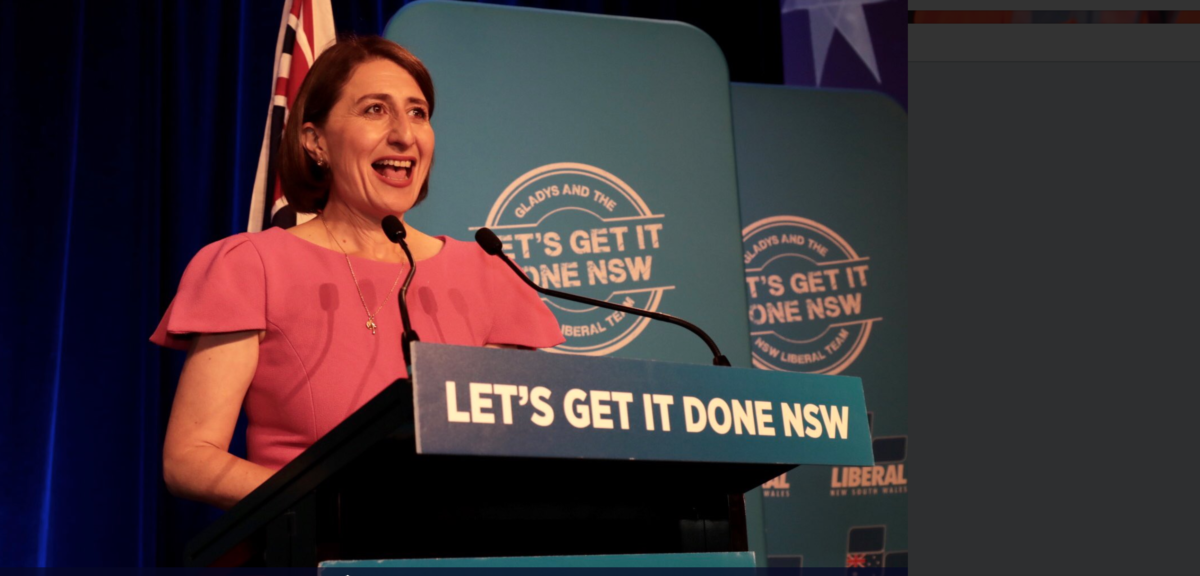New Cornwall Insight Australia’s research has compared renewable generation in NSW over the last four years to that of coal generators scheduled to exit the market by 2035. The results are stark: renewables contributed an average under 10% of total generation in NSW, while over the same period said coal generators averaged approximately 77%.

Lumi Adisa, Lead Consultant – Market Analysis and Business Development at Cornwall Insight Australia, said that these results are particularly troubling because the gap alternative technologies sill need to bridge over the next 10-15 years far exceeds any growth capabilities seen in the renewable sector so far.
However, this is no reason for NSW to be disparaged. Indeed, the most recent Clean Energy Outlook – Confidence Index from the Clean Energy Council (CEC) singled out NSW as being particularly attractive to investors thanks to the state government’s clear strategy, particularly its recently amended laws allowing large-scale battery storage systems and its three pending renewable energy zones (REZs).
Late last month, the NSW Government’s plan to deliver a 3 GW REZ in the state’s Central-West was met with overwhelming investor interest and project proposals valued at $38 billion. The original plan was to deliver 3 GW of firmed renewable energy to the region, but the expressions of interest totalled 27 GW, prompting NSW Energy Minister Matt Kean to commit a further $31.6 million to the REZ.
“The NSW Government’s strong and positive statements and clear strategy for the transition of the state from one that is highly dependent on coal-fired power to one that is an energy and economic superpower in a low-carbon economy was a key factor in increased investor confidence,” said the CEC.

Image: NSW Department of Planning & Environment
Adisa agrees, noting that the Central-West REZ represents a significant move to help bridge the gap. “NSW is also looking to improve its import capacity with ~3GW of interconnector expansions in various stages of regulatory approvals,” said Adisa. “Other innovative models for network reinforcements within the state are also being planned in preparation for new generation seeking to connect.”
At least at the level of state government policy then, NSW is doing what it can to bridge the looming gap in generation. However, as Cornwall Insight Australia’s research highlights, the size of the gap is daunting, and significant infrastructural development is needed before renewable energies can start to make up ground in an equivalently significant manner.
This content is protected by copyright and may not be reused. If you want to cooperate with us and would like to reuse some of our content, please contact: editors@pv-magazine.com.









By submitting this form you agree to pv magazine using your data for the purposes of publishing your comment.
Your personal data will only be disclosed or otherwise transmitted to third parties for the purposes of spam filtering or if this is necessary for technical maintenance of the website. Any other transfer to third parties will not take place unless this is justified on the basis of applicable data protection regulations or if pv magazine is legally obliged to do so.
You may revoke this consent at any time with effect for the future, in which case your personal data will be deleted immediately. Otherwise, your data will be deleted if pv magazine has processed your request or the purpose of data storage is fulfilled.
Further information on data privacy can be found in our Data Protection Policy.